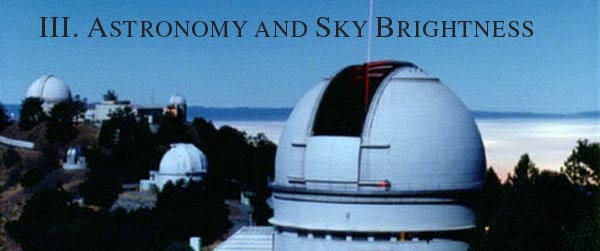


UNIVERSITY OF CALIFORNIA OBSERVATORIES / LICK OBSERVATORY


1. Infrared observations look at colors, or wavelengths, beyond the range of human vision. For these wavelengths, the natural sky brightness is much greater than man-made sources, even near large cities.
2. In high-resolution spectroscopy, light from a star is spread out so much in color that only fairly bright stars can be observed, and sky brightness is not a problem. Studies of this kind led to the discoveries of extra-solar planets.
3. The Adaptive Optics (AO) technique compensates for distortions introduced by the Earth's atmosphere, thus removing the ``twinkle'' from the star's incoming light. AO allows astronomers to obtain highly detailed images of small regions. Such images are usually recorded in the infrared and so are not affected by artificial lights.
Observations of the above types are given an increasing share of the observing time at Lick during bright phases of the moon. However, when the moon is less than half full and the night sky is dark, most of the time is spent studying faint objects at the limit of visibility, either with direct imaging or with low-resolution spectroscopy.
Astronomers, in their search for an understanding of the origin and evolution of the universe, are always striving to study fainter objects in visible light. One important reason to make such observations is that many kinds of interesting objects are intrinsically faint. But there is another, more substantive, reason astronomers are interested in faint objects. Because light has a finite speed, telescopes act as ``time machines.'' When we look at distant objects whose light has been traveling toward us for a very long time, we see them as they were at an earlier epoch. Astronomers are constantly struggling to probe deeper into space in order to observe the universe at times closer to its creation. Distant objects appear faint from our perspective, and to probe the distant universe means observing faint objects at the limits of detectability. The words of renowned astronomer Edwin Hubble still hold true today: ``With increasing distance, our knowledge fades, and fades rapidly. Eventually we reach the dim boundary - the utmost limits of our telescopes. There, we measure shadows, and we search among ghostly errors of measurement for landmarks that are scarcely more substantial.'' The observation of faint objects requires large telescopes, and astronomers have constantly pushed technology in their quest for ever larger telescopes.
To view faint objects requires not only large telescopes but also dark skies. Regardless of the telescope's size or type of observation being made, very faint objects fade into the background brightness of the night sky. This brightness comes from both man-made and natural sources. Although the most obvious natural source is the moon, there are other natural sources (called air-glow) caused by emission of light by atoms and molecules in the atmosphere. However, near cities during the dark of the moon, man-made sources are the dominant contribution to sky brightness.
